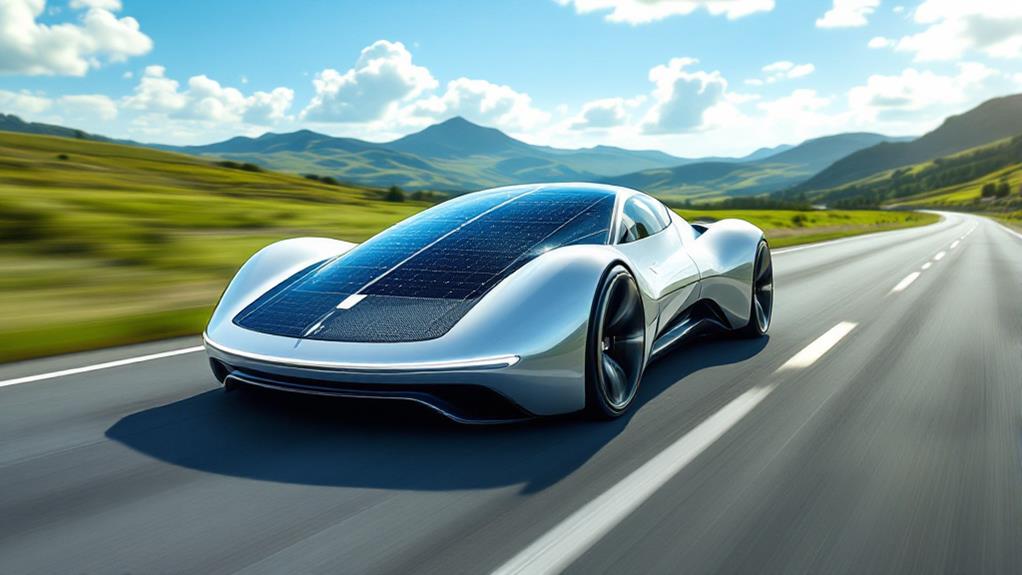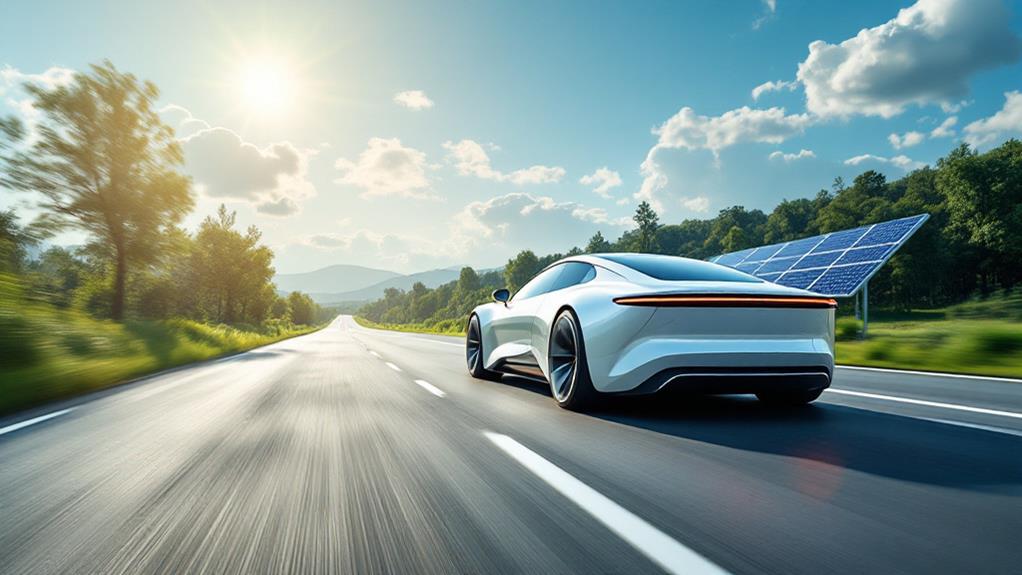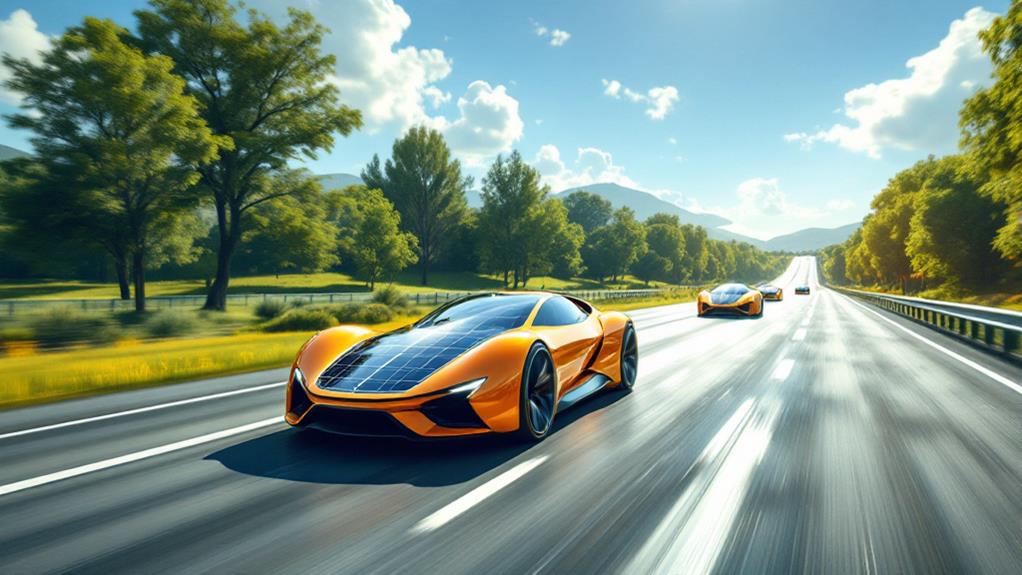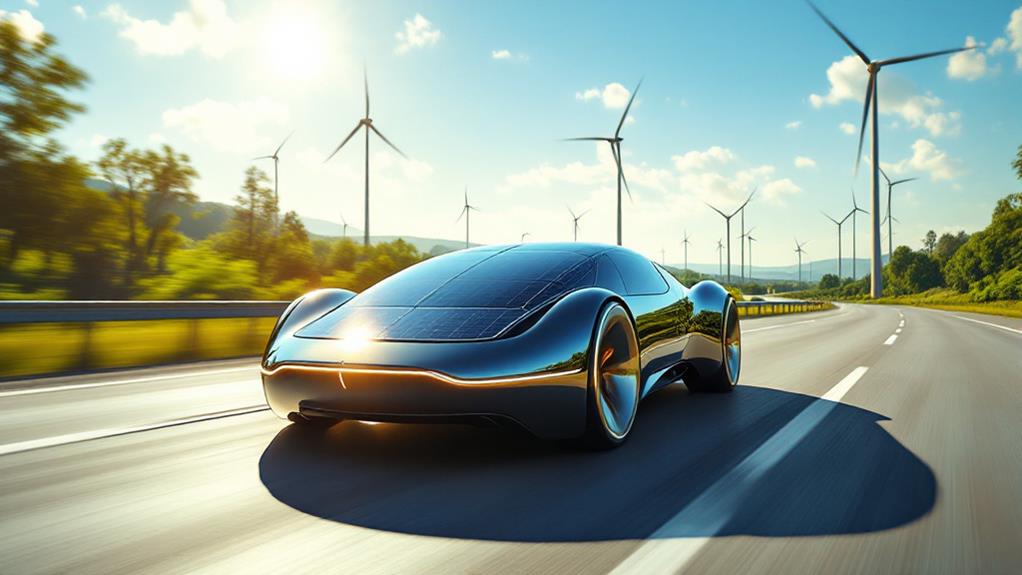All You Need to Know About Solar-Powered Cars: How They Work and Where to Buy

Solar-powered cars harness sunlight using photovoltaic cells, converting it into electricity to power the vehicle. They produce zero emissions, reducing your carbon footprint and saving on fluctuating fuel costs. Key components include solar panels, energy storage systems, and sustainable materials. While challenges like weather dependency and limited range exist, models like the Lightyear 0 and Aptera showcase promising efficiency and innovation. When buying, consider initial costs against long-term fuel and maintenance savings. Check local dealerships and online platforms for availability. There's more to investigate about these environmentally-friendly innovations and their impact on modern transportation.
Understanding Solar-Powered Cars
Solar-powered cars represent a fascinating intersection of technology and sustainability, harnessing the sun's energy to power vehicles efficiently. You might wonder how these vehicles convert sunlight into motion. At their core, solar-powered cars rely on solar energy, captured through photovoltaic cells on the car's surface. These cells absorb sunlight and transform it into electricity, which powers the vehicle's motor. The process is quite similar to how solar panels work on rooftops, but in this case, it's integrated into a moving vehicle.
One of the biggest advantages of solar-powered cars is their minimal environmental impact. By utilizing solar energy, these vehicles produce zero emissions, meaning you won't contribute to air pollution or greenhouse gas emissions every time you drive. This can make a significant difference in reducing your carbon footprint, especially if more people adopt this technology. It's a step towards a cleaner, more sustainable future.
Moreover, solar cars can decrease dependence on fossil fuels, which are finite and environmentally damaging. You'll appreciate the independence from fluctuating fuel prices and the sense of contributing to a healthier planet. Adopting solar-powered transportation could revolutionize the way you think about your daily commute and environmental responsibility.
Key Components and Technology
When exploring the key components and technology of solar-powered cars, you'll find that photovoltaic cells are at the heart of their design. These cells convert sunlight directly into electricity, which powers the vehicle. Solar panels, strategically placed on the car's exterior, optimize solar efficiency by capturing as much sunlight as possible. This captured energy is then stored in energy storage systems, like advanced batteries, ensuring you've got power even when the sun isn't shining.
Vehicle integration is essential for optimizing the performance of solar-powered cars. Engineers focus on seamlessly combining the solar panels, energy storage, and charging systems to create a cohesive unit. They often use sustainable materials to improve the vehicle's environmental benefits and enhance performance metrics, like range and speed.
Picture this:
- Sleek solar panels adorning the vehicle's surface, capturing sunbeams with precision.
- Advanced energy storage systems tucked away under the hood, silently holding power for your expedition.
- Sophisticated charging systems ensuring that every ounce of sunlight is converted efficiently.
These technological marvels work in harmony, pushing the boundaries of what's possible with renewable energy. By understanding these components, you'll appreciate the innovation driving solar-powered cars.
Advantages of Solar Vehicles

With the promise of a greener tomorrow, solar vehicles offer numerous advantages that revolutionize the way we think about transportation. For starters, they greatly reduce the environmental impact associated with traditional fuel-based cars. By harnessing the power of the sun, solar vehicles produce zero emissions during operation, helping to decrease air pollution and combat climate change. You're not just driving a car; you're making a statement about protecting the planet.
Beyond environmental benefits, solar vehicles also provide considerable cost savings. Traditional vehicles require fossil fuels, which can be expensive and subject to unpredictable price hikes. In contrast, sunlight is free and abundant, allowing you to save on fuel costs over time. Maintenance costs are typically lower as well since electric engines have fewer moving parts compared to combustion engines. You'll find yourself visiting the mechanic less often, which can save you both time and money.
Moreover, solar vehicles can offer energy independence. By generating your own power directly from the sun, you're less reliant on external energy sources. Imagine the freedom of being able to travel long distances without worrying about fuel availability or prices. With solar vehicles, you're investing in a sustainable and self-sufficient future.
Challenges and Limitations
While solar vehicles promise a cleaner future, they aren't without their challenges and limitations. One significant hurdle is battery efficiency. Solar panels on cars can only generate so much energy, and storing this energy efficiently remains a technological challenge. Batteries need to be both lightweight and capable of holding substantial power, which isn't always achievable with the current technology. As a result, the range of solar cars can be limited, making them less practical for long-distance travel.
Weather dependency is another major concern. Solar cars rely on sunlight to charge, which means cloudy or rainy days can severely impact their performance. This dependency on weather conditions can make solar vehicles less reliable in regions with inconsistent sunlight.
Consider these challenges:
- Battery efficiency: Current technology struggles to balance weight and power storage.
- Weather dependency: Performance drops on cloudy or rainy days.
- Limited range: Solar cars might not be suitable for long trips.
These limitations mean that while solar-powered cars are a promising technology, they currently face challenges that need addressing before they can become a mainstream option. It is crucial to weigh these factors if you're considering investing in a solar vehicle.
Leading Solar Car Models

Despite the hurdles solar-powered cars face, several groundbreaking models are leading the way in overcoming these challenges. One standout is Lightyear 0, crafted by top solar manufacturer Lightyear. This car boasts a creative design that seamlessly integrates solar panels into its sleek body. With an ability to recharge using sunlight while driving, it reduces dependency on traditional charging stations. It's not just about aesthetics; it's about enhancing efficiency and sustainability.
Another model making waves is the Aptera, featuring a futuristic design that resembles something out of a sci-fi movie. Aptera's creators focus on maximizing aerodynamics and energy efficiency, allowing the car to travel up to 1,000 miles on a single charge. This vehicle is built by Aptera Motors, a company dedicated to pushing the boundaries of solar creativity.
Then there's the Sion by Sono Motors, which combines practicality with cutting-edge technology. Its body is embedded with solar cells, enabling it to harness solar energy effectively. This model caters to the everyday driver seeking an eco-friendly option without sacrificing utility.
These models showcase how top solar manufacturers are transforming challenges into opportunities with their creative designs, paving the way for a more sustainable future in transportation.
Purchasing Options and Considerations
When considering the purchase of a solar-powered car, it is vital to weigh both the benefits and challenges. Solar cars offer significant environmental advantages and potential savings on fuel costs. However, they often come with a higher upfront price. To manage this, investigate various financing options that can make your purchase more affordable. Some dealerships offer low-interest loans, while others might provide leasing options that allow you to test the technology without a long-term commitment.
As you probe into buying a solar-powered car, remember to factor in maintenance tips. Though these cars generally require less maintenance due to fewer moving parts, certain aspects like battery care and panel cleaning are fundamental for peak performance. It's wise to account for these in your budget and schedule regular check-ups.
Consider these points when evaluating your purchasing options:
- Budget: Determine how much you're willing to spend and investigate financing options to fit your financial plan.
- Availability: Solar-powered cars might not be widely available in all regions, so check local dealerships or online platforms.
- Long-term goals: Think about how a solar-powered car aligns with your environmental and financial objectives.
Future of Solar-Powered Transportation

The future of solar-powered transportation looks promising as technology continues to advance. You're on the cusp of witnessing groundbreaking solar innovations that will redefine how we think about mobility. Imagine a world where vehicles harness the sun's energy more efficiently than ever, providing an eco-friendly alternative to fossil fuels. This shift isn't just about reducing carbon emissions; it's about embracing sustainable mobility that promotes greener living.
As solar technology improves, the efficiency of solar panels on vehicles will increase, making them more viable for everyday use. You'll find advancements in solar cells that can capture more sunlight even on cloudy days, ensuring your solar-powered car stays charged longer. Furthermore, lighter and more aerodynamic vehicle designs will improve performance and range, making them a practical choice for long-distance travel.
Urban areas will benefit greatly from these solar innovations. You might see solar-powered public transportation systems, reducing city pollution and congestion. Plus, as infrastructure adapts, charging stations powered by solar energy could become commonplace, facilitating seamless integration into your daily life. By embracing these changes, you're not just adopting new technology—you're contributing to a future where sustainable mobility is the norm.



